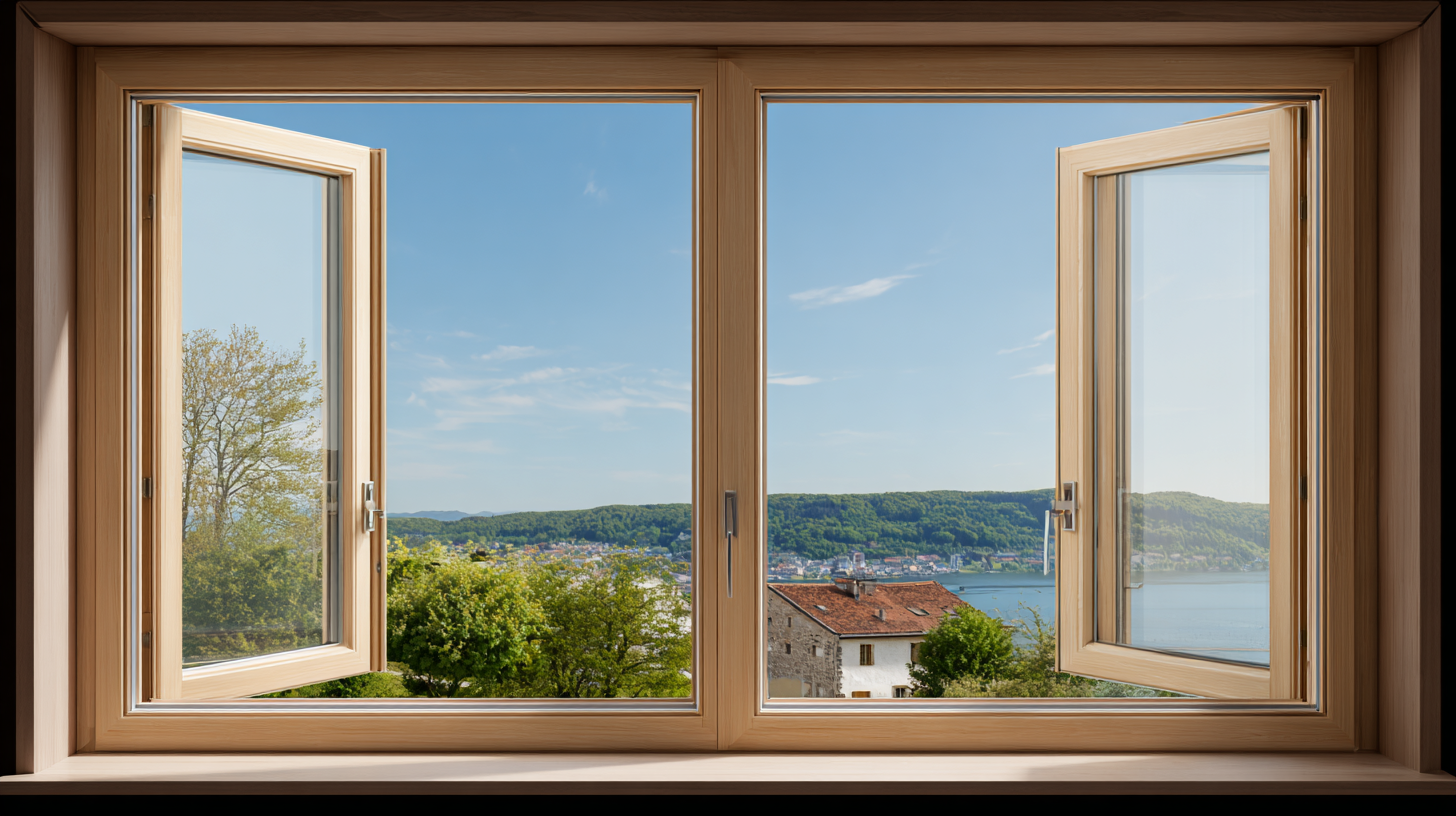In recent years, the demand for high-quality wood frame windows has surged as homeowners increasingly prioritize energy efficiency and aesthetic appeal in their renovation and construction projects. According to the "2024 Global Wood Frame Windows Market Report," the industry is expected to grow at a CAGR of 6.5% through 2025, driven by rising consumer preference for sustainable building materials. With this growth comes the need for comprehensive export certification to ensure that wood frame windows meet international standards of quality and safety. As regulations become more stringent, navigating the complexities of import processes is crucial for manufacturers and exporters alike. This blog will delve into the latest industry trends, focusing on the significance of proper certification and providing a complete guide for importing wood frame windows in 2025 and beyond.

Export certification plays a critical role in the wood frame window industry, ensuring that products meet international standards and regulations. This certification is not just a bureaucratic hurdle but a vital assurance for importers about the quality and safety of the products they are purchasing. With consumers increasingly seeking environmentally friendly and sustainably sourced materials, export certification provides a mark of trust, indicating that the wood used in these windows complies with both domestic and international environmental regulations.
Furthermore, having the appropriate export certifications can significantly enhance a manufacturer’s competitive edge in the global market. It signals to potential buyers that the company adheres to strict quality control measures and has undergone rigorous inspections. This not only helps in building brand credibility but also facilitates smoother transactions across borders. As global trade becomes more interconnected, understanding the importance of export certifications becomes essential for stakeholders aiming to navigate the complexities of importing wood frame windows successfully.
As the demand for eco-friendly building materials continues to rise, the wood frame window industry is undergoing significant transformations. Key trends anticipated for 2025 include an increased emphasis on sustainability and energy efficiency. Consumers are becoming more aware of the environmental impact of construction materials, pushing manufacturers to adopt greener practices, such as sourcing wood from responsibly managed forests and using water-based finishes. This trend not only appeals to environmentally conscious buyers but also aligns with global regulations advocating for sustainable development.
Another vital aspect shaping the export landscape for wood frame windows is the advancement of technology. Innovations in manufacturing processes and materials have led to improved durability and performance of wood frame windows, making them more competitive in the global market. Smart windows, which integrate technology to enhance energy efficiency and comfort, are gaining traction. As these advanced products come to prominence, exporters will need to comply with various certification standards to tap into international markets successfully. Understanding these evolving trends will be crucial for stakeholders aiming to thrive in the competitive export environment by 2025.
When dealing with export certification, especially for products like wood frame windows, understanding the documentation process for export compliance is crucial. Exporters must navigate a complex landscape of regulations and requirements, which not only vary by product but also by destination country. This can involve gathering certificates of origin, compliance documents specific to international trade agreements like CUSMA, and ensuring that all paperwork meets the standards set by both exporting and importing nations.
Moreover, with recent changes in trade regulations, including new export control laws from major economies, exporters need to stay informed about the latest compliance codes and best practices. Accurate documentation, including maintaining trade records for required durations, is essential to avoid penalties and ensure smooth customs clearance. By implementing robust internal procedures for export compliance, businesses can mitigate risks associated with regulatory violations and streamline their operations to better respond to market demands. Knowledge of Incoterms, the rules that define responsibilities in shipping, is equally important for minimizing misunderstandings between exporters and importers, thus facilitating effective international trade.
 When selecting the best wood frame windows for export, understanding essential quality standards is paramount. Industry data shows that windows account for about 30% of residential heat loss, making their energy efficiency a crucial factor (U.S. Department of Energy). Therefore, compliance with standards such as the Energy Star certification can significantly impact marketability. Ways to achieve this include ensuring proper insulation and using low-emissivity (Low-E) glass, which enhances thermal performance.
When selecting the best wood frame windows for export, understanding essential quality standards is paramount. Industry data shows that windows account for about 30% of residential heat loss, making their energy efficiency a crucial factor (U.S. Department of Energy). Therefore, compliance with standards such as the Energy Star certification can significantly impact marketability. Ways to achieve this include ensuring proper insulation and using low-emissivity (Low-E) glass, which enhances thermal performance.
Tip: Always verify if your wood frame windows meet the local regulations of your target market, as standards may vary significantly from one region to another. This can include aspects such as air infiltration rates and water resistance.
Another key standard is the Certification for Sustainable Forestry, like the Forest Stewardship Council (FSC) certification. This not only guarantees that the wood is sourced from responsibly managed forests but also adds value to the product, appealing to environmentally-conscious consumers. Research indicates that products with sustainability certifications can command a 10-15% price premium in certain markets (GreenBiz).
Tip: Consider incorporating distinctive design features that align with the latest trends in sustainability and efficiency, as these enhancements can distinguish your product in a competitive marketplace.
When venturing into the world of importing wood frame windows, understanding the essential regulations is crucial for beginners. Import regulations can vary significantly from one country to another, affecting everything from product safety standards to environmental compliance. Before engaging in any export certification process, it is vital to familiarize yourself with the import laws specific to your destination. This includes checking for any permits required and ensuring that your products meet local standards to avoid costly delays and rejections.

Additionally, tariff classifications play a pivotal role in the import procedure. Each product may fall under a specific code that determines the applicable duties and taxes upon entry. Therefore, consulting with a customs broker can help streamline this process, ensuring that your shipment complies with all necessary import conditions. By proactively navigating these import regulations, you can ensure a smoother transition for your wood frame windows from manufacturer to market, ultimately contributing to your business’s success.




